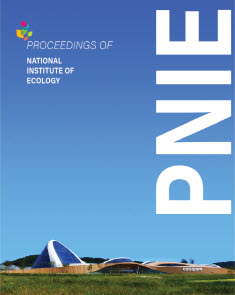Planning Non-Invasive Conservation Genetic Experiments Based on Factors Affecting DNA Amplification Using Fecal Samples of Korean Long-Tailed Goral (Naemorhedus caudatus)
Planning Non-Invasive Conservation Genetic Experiments Based on Factors Affecting DNA Amplification Using Fecal Samples of Korean Long-Tailed Goral (Naemorhedus caudatus)
초록
In this review, we compared the success rates of DNA amplification and introduced the efficient non-invasive sampling of fecal samples collected from captive and wild Korean long-tailed gorals (Naemorhedus caudatus) by referring to previous non-invasive studies, including three important references (Kim et al., 2008; Kim, 2021; Kim, 2022). A large difference in PCR success rates in the captive and wild populations was observed for mitochondrial (100 and 70.0%), sex-linked (44.4 and 20.8%), and microsatellite markers (73.9 and 34.8%, respectively). Out of the three types of genetic markers, the mitochondrial maker showed the highest success rate, followed by microsatellite and sex-linked markers. In addition, we estimated two factors that affected the PCR success, including the length of the amplified fragments (long, medium, and short) and the type of primer (universal and specific) in fecal samples from a captive population. The length of the PCR fragment was inversely proportional to the PCR success (5.3, 44.4, and 55.6% for long, medium, and short fragments, respectively), and the specific primer set (100%) was more efficient than the universal primer set (60.0%). This review is fundamental but would be greatly helpful for new non-invasive conservation genetic studies, particularly those that use fecal samples from captive and wild populations of rare endangered species. We recommend beginning conservation genetic experiments using mitochondrial markers and then nuclear markers, such as microsatellite and sex-linked markers, to save time, costs, and labor.
- keywords
- Goral, Microsatellite, Mitochondrial cytochrome b, Non-invasive sampling, Sex-linked gene
Abstract
In this review, we compared the success rates of DNA amplification and introduced the efficient non-invasive sampling of fecal samples collected from captive and wild Korean long-tailed gorals (Naemorhedus caudatus) by referring to previous non-invasive studies, including three important references (Kim et al., 2008; Kim, 2021; Kim, 2022). A large difference in PCR success rates in the captive and wild populations was observed for mitochondrial (100 and 70.0%), sex-linked (44.4 and 20.8%), and microsatellite markers (73.9 and 34.8%, respectively). Out of the three types of genetic markers, the mitochondrial maker showed the highest success rate, followed by microsatellite and sex-linked markers. In addition, we estimated two factors that affected the PCR success, including the length of the amplified fragments (long, medium, and short) and the type of primer (universal and specific) in fecal samples from a captive population. The length of the PCR fragment was inversely proportional to the PCR success (5.3, 44.4, and 55.6% for long, medium, and short fragments, respectively), and the specific primer set (100%) was more efficient than the universal primer set (60.0%). This review is fundamental but would be greatly helpful for new non-invasive conservation genetic studies, particularly those that use fecal samples from captive and wild populations of rare endangered species. We recommend beginning conservation genetic experiments using mitochondrial markers and then nuclear markers, such as microsatellite and sex-linked markers, to save time, costs, and labor.
- keywords
- Goral, Microsatellite, Mitochondrial cytochrome b, Non-invasive sampling, Sex-linked gene
- 투고일Submission Date
- 2024-07-10
- 수정일Revised Date
- 2024-07-22
- 게재확정일Accepted Date
- 2024-07-23
- 다운로드 수
- 조회수
- 0KCI 피인용수
- 0WOS 피인용수
_학술지_디자인_시안_koar_top_300x55.png)


